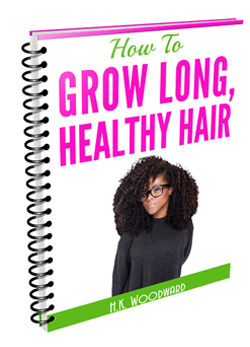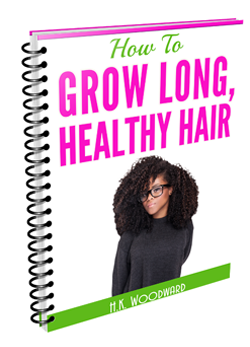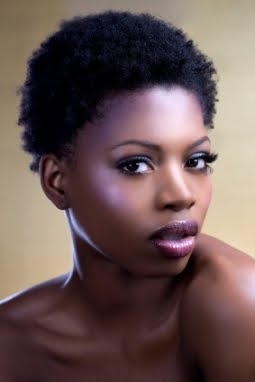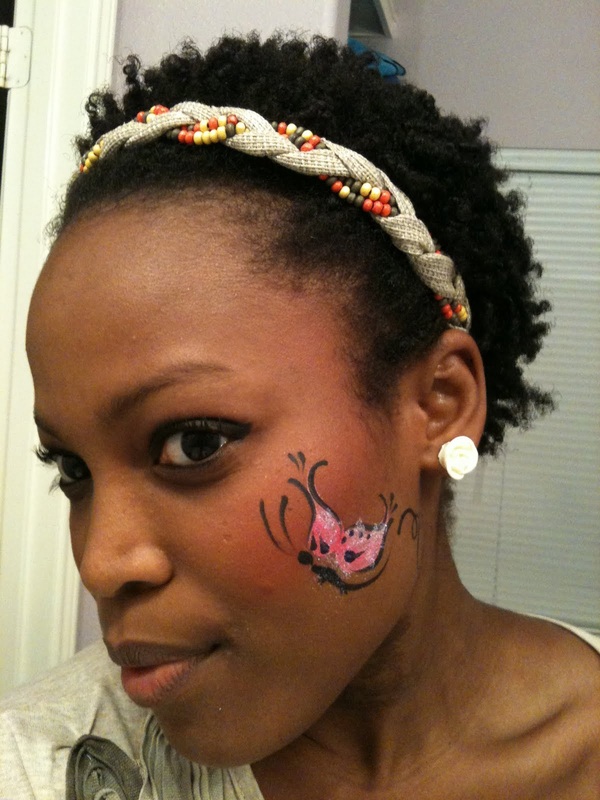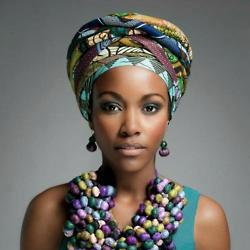 Shed hairs! Shed hairs!
The quick answer: YES.
Shedding hair is a natural process that you can't stop; it's genetically predetermined. All hair has three growth phases: 1. Anagen phase: hair growth Can last 1 to 10 years, but is 4 to 7 year on average. According to The Science of Black Hair, 88% of the hairs on your head are in the anagen (growth) phase at any one time. 2. Catagen phase: hair resting Lasts anywhere from 4 weeks to 4 months; 1% of the hairs on your head are currently in the catagen (resting) phase. 3. Telogen phase: hair shedding 11% of the hairs on your head are currently in the telogen (shedding) phase. These hairs either come our on their own or are pulled out during styling. If you have braids or dreadlocks the shed hairs don't fall out because they are restricted from doing so. This is actually one of the reasons locs can appear to be thicker than normall hair, shed hair remains matted to the loc and cannot escape. Shedding is different to breakage. Broken hair does't usually come out from the root it is broken off at an intermediate point due to stress, styling and other hair handling. How can you tell if the hair in your hand is shed or broken? A shed hair has a white/grey bulb at the end of it. Why is this? Because hair in the catagen phase doesn't produce hair color or melanin. A shed hair will also tend to be much longer than a broken hair because it detaches itself straight from the scalp. How many hairs should you shed in a day under normal circumstances? Most say 50 to 100 hair per day; others say up to 200 hairs is normal. 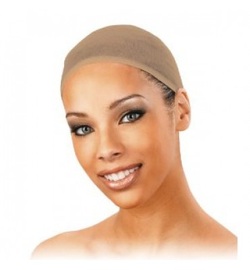 Cotton wig cap Cotton wig cap
It's pretty common knowledge now that cotton is more absorbent than satin or silk so you should sleep with a satin cap over your head.
So, could a cotton wig cap be damaging you hair? The quick answer: no, not likely. Cotton wig caps are okay if you are not sleeping in them. Cotton surfaces are worse to sleep on because the full weight of your head is on the cotton cap or surface and all the tossing and turning adds to the abrasion (rubbing) and drying out of hair. When you wear a wig cap during the day, however, your hair does not rub against the cap nearly as much. If your hair is in cornrows or flat twists that's even better because loose strands are much more vulnerable than hair that is bunched up together. So overall, you are okay to wear a wig cap. Protect your hair by flat twisting or corn rowing it before putting the cap on.
Styled by Felicia Leatherwood, Teyonah Pariss (Mad Men actress) fashioned a pompadour updo to the Screen Actors Guild (SAG) Awards.
She clearly has natural hair and she styled it so elegantly I'm sure everyone on the red carpet was green with hair envy - even the straight-haired girls who tend to think straight is better. This hair is the stuff dreams are made of for me: thick, healthy, luscious and kinky. There is no denying that this updo more than completes the outfit! 
To ensure you absorb all the good stuff from a deep conditioner many recommend that you apply heat over a shower cap or sit under a hooded dryer with hair covered in a plastic shower cap.
Why doesn't this cause heat damage? The reasons are simple: 1. Heat is not direct The heat is not applied directly to the hair, it's over a shower cap so it is much less intense. 2. The conditioner creates a protective seal At the time you apply heat, your hair is covered in the conditioner and that in itself acts as a strong heat protectant. 3. Water's "specific heat" temperature is very high The specific heat is the amount of heat required to raise the temperature of a given quantity of 'something' by one degree Celsius. A lot of energy is need to increase the temperate of water by one degree. Conditioner's key ingredient is water. Water acts as a buffer between the heat and your hair and slows down the rate at which your hair fibres take in the heat. It also follows that if your hair is very well moisturised, sealed (e.g. with coconut oil or an oil blend) and has been recently deep conditioned, styling tools that use heat are much less likely to cause heat damage. 
Get your FREE ebook on How To Grow Long, Healthy Natural Kinky or Curly Hair. Ref: The Science of Black Hair, pages 171-2 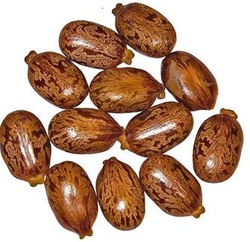
You can undertake the castor oil challenge at any time you choose; it's not some historical undertaking whose time has passed.
What's the objective of the castor oil challenge? To improve hair growth Which hair types can undertake the challenge? Any and all hair types How long does the challenge last? 3 months What products do you need for the castor oil challenge? Just castor oil, your fingers and a notebook to document the changes. What do you do with the castor oil? Massage it into your scalp gently for 7 to 12 minutes. How often do you have to massage the oil into your scalp? At least 3 times a week Can the castor oil challenge be improved? I think so. For every ounce, 28 ml, of castor oil add 3 drops of the following essential oils: cedarwood, lavender, rosemary and thyme. These are all documented as improving hair health and growth. I don't like castor oil, are there any other oils I can use for my scalp to get the same effect? Yes. Specifically for massaging the scalp I recommend jojoba, avocado oil and argan oil as the best oils for scalp massage. Where can you get castor oil? In a health food store or on Amazon.com or Amazon.co.uk. Is there anything else I should know? Yes. Your hair has a maximum rate at which it can grow as determined by genetics. Massaging the scalp just ensures your hair is growing at the maximum rate that is possible for you. Your results will not necessarily match anyone else's results. If you've tried the castor oil challenge please let us know how it went with a comment...
If you hair is currently weak, damaged or unhealthy in any other way, this is not the time to be getting braids. Nurse your hair back to health and then go to get braids. Before a salon appointment:
What is the point of all this? You want your hair to be as strong as possible so it can take any trauma; a lot of hairdressers don't take the time to detangle hair gently and will more than likely blow dry the hair prior to plaiting it. All this handling and styling is prime time for your hair to break. 
If you have adequately detangled and blow dried your hair enough to make it easy to plait it will be very easy for you to request that the stylist doesn't blow dry it again. If your hair is matted or tangled you best believe the stylist will insist she needs to blow dry it. I am only just recovering from one such recent hair trauma!
I also have a very sensitive scalp so almost every time I get braids I have bumps around the edges because even a little pulling is too much for my tender skin. When you get to the appointment, remain involved in the process:
I'm full of confidence but I too sometimes feel like I am being too demanding at the salon so I let some transgressions slide without stating my opinion ~ big mistake ~ I know my scalp and I know my hair so I need to communicate the needs of my hair, you do too. 
First and foremost, note that not every conditioner is a deep conditioner. I wish I really understood this at the beginning of my natural journey. Read this to understand the variety of conditioners that are on the market.
A deep condition is need every 7/10 to days regardless of the state of your hair: whether you're rocking an afro, in braids or a weave your hair needs regular hydration and deep conditioning. The objective of conditioning is to:
The deep conditioning process:
If you intend to blow dry or flat iron your hair afterwards you can follow the deep conditioner with a moisturising condition. This will ensure the heat does not dry the hair out too much. A deep conditioner followed by a moisturising conditioner, say what? Yeah, according to The Science of Black Hair you can do that.

If you've gotten (or want to get) into blending your own hair products you've probably wondered how to use essential oils safely: how many drops are too little, how many are too much?
This is important because essential oils are extremely potent and if incorrectly used can cause fires (!), skin burns and other adverse side effects. The number of drops of an essential oil used depends on what you want that blend for. 
1% dilution
Ideal if the blend will be used by a child, an elderly person, someone who is chronically ill and pregnant women 2% dilution Ideal for the average adult. Do not use more than this to avoid adverse effect, e.g. lavender is a sedative in small doses and will help you sleep but a stimulant in high doses! Go figure. 3% dilution Okay if you are making cleaning agents or if recommended by a professional. What do these dilutions translate to in number of drops? For every 30 ml (1 oz) of oil, you need:
Why aren't the number of drops of exact? Different essential oils have different thickness / density / viscosity. If the essential comes out the bottle in big/thick drops you need fewer drops than if it comes out in small/thin drops. 
Get your FREE ebook on How To Grow Long, Healthy Natural Kinky or Curly Hair. References Application and Dilution Essential Oil Dilutions Chart Diluting Essential Oils
GIVEAWAY CLOSED This giveaway is sponsored by Mahogany Naturals. They are giving this great bundle of products to one lucky winner. The entry question is at the bottom. First, a bit about the products: 
1. Re-constructive shampoo bar
2. Luscious hair milk
3. Daily moisturising leave in treatment
You can find Mahogany Naturals on Facebook and etsy! Entry question was: What type of headgear e.g. head scarves do you prefer, african prints or more culture/region-neutral designs? GIVEAWAY CLOSED!
When you've just cut your hair off you might be at a loss as to how to style your teeny weeny afro (or TWA); well, I have some fantabulous styles for you below. In addition to these styles, however, note that bright lipsticks and big earrings looks awesome with a TWA. Click to enlarge!
You can wear your short natural hair / TWA as is!Embellish short natural hair / TWA with a hair clip......hairbands look good on short natural hair / TWAUse some gel or a side comb to flatten your short natural hairLast but not least, head scarves and hats! |
I now blog about wealth creation - so if you have any money questions meet me there, you can do all sorts of cool things like leave me a voicemail.
By Heather Katsonga-Woodward
I was a natural hair blogger and mixtress living between London & Chicago from 2012 to 2017. I always thought I was 4C but some say 4B; images below - you decide! Heather xx Categories
All
Archives
November 2016
|


